Ever wondered if poplar is a good choice for your next cutting board? Explore its unique features and find out what makes it stand out, or not, in your kitchen!
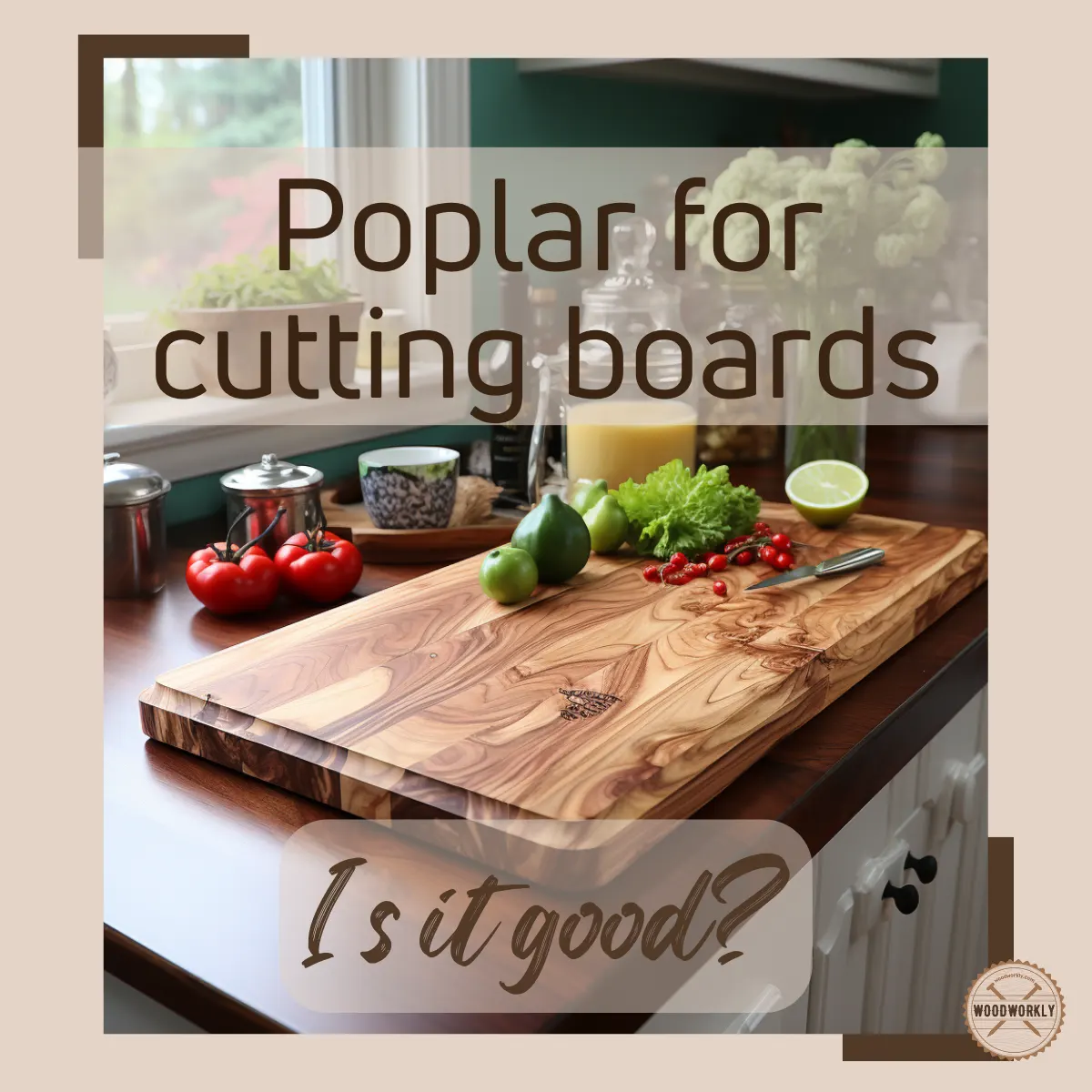
Poplar wood is known as one of the lightest and easiest wood to work with.
Therefore, poplar wood is commonly used for many woodworking applications, such as cabinetry and other interior furniture making.
When it comes to kitchen woodworking applications, I was curious about using Poplar for cutting boards.
So, I did some research about its workability and safety level for food and was able to find out lots of useful info with the help of experts.
Here’s what I know from years of working with Poplar wood, Is Poplar good for cutting boards?
No, Poplar isn’t good for cutting boards since it is too soft and porous for heavy cutting uses. Poplar wood easily sucks up bacteria due to its porous nature and tends to show knife marks and gouges quickly. Its soft grain makes it a good choice for cutting softer foods without crushing them.
But there’s more to know about it.

So, I’ll explore why poplar isn’t good for cutting boards, is poplar wood safe for food, what are the advantages and disadvantages of using poplar for cutting boards, and what are the better woods you can use to make cutting boards than poplar as well.
Furthermore, I’ll answer some frequently asked questions as well.
So, let’s get going!
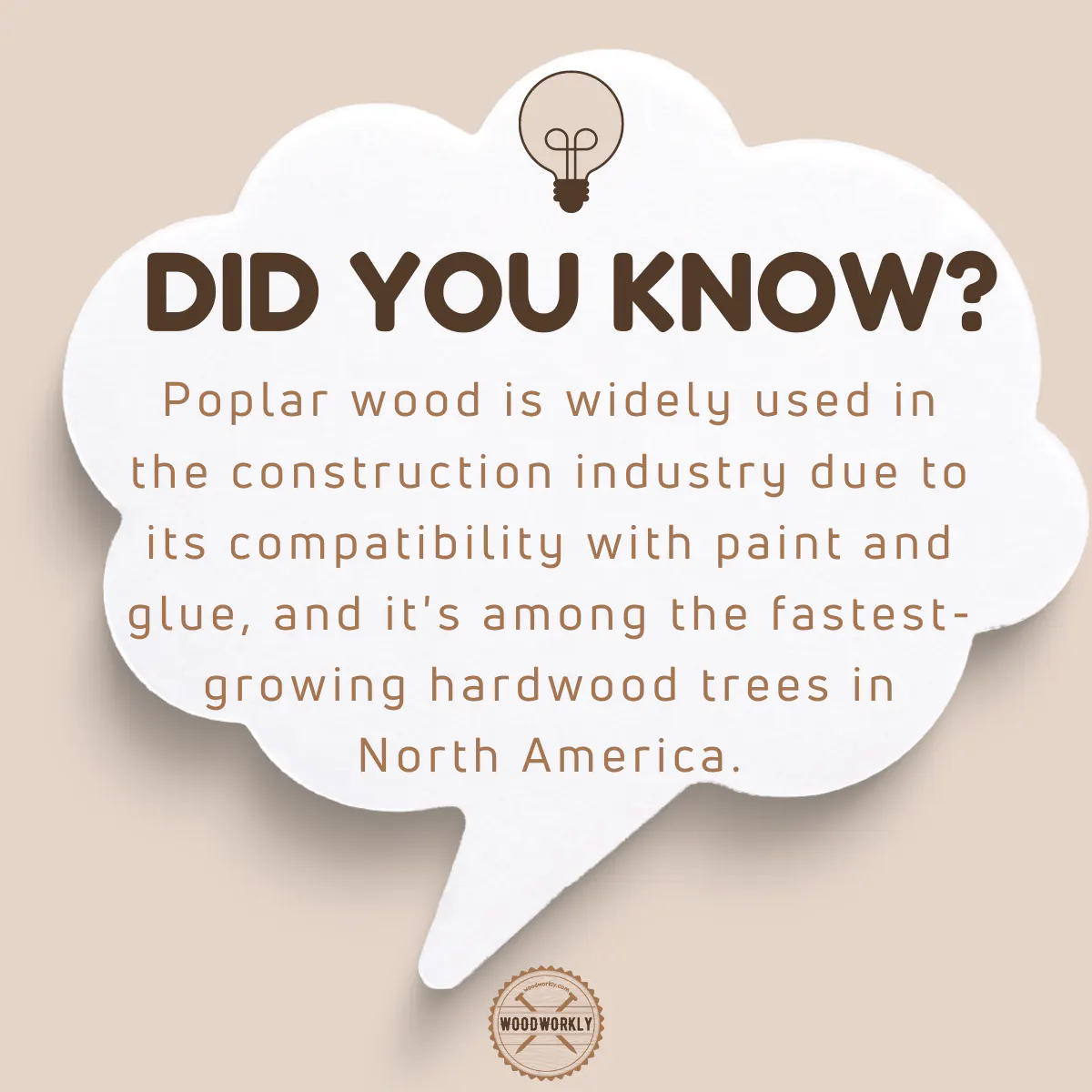
Pros and Cons of Poplar for Cutting Boards
I have made and used poplar cutting boards over several years and I have got a good understanding of Poplar’s advantages and disadvantages of poplar wood
So, I applied them to the cutting board field and made the following chart to identify the Pros and Cons of Poplar wood when making a cutting board.
| Advantages of Poplar Cutting Boards | Disadvantages of Poplar Cutting Boards |
| Lightweight | Too soft for cutting board |
| Paint and glue take easily | Porous structure sucks up bacteria easily |
| Easy to work with | Rots easily |
| Cheap | Tear up easily |
| Uniform texture | Dent and Scratch easily |
| Easy to carve |
As you can see in terms of appearance poplar wood cutting boards are exceptional and have great qualities.
But when it comes to strength poplar wood is not good for heavy cutting uses.
Therefore, in cutting board making, poplar wood is not the first choice for a fine outcome.
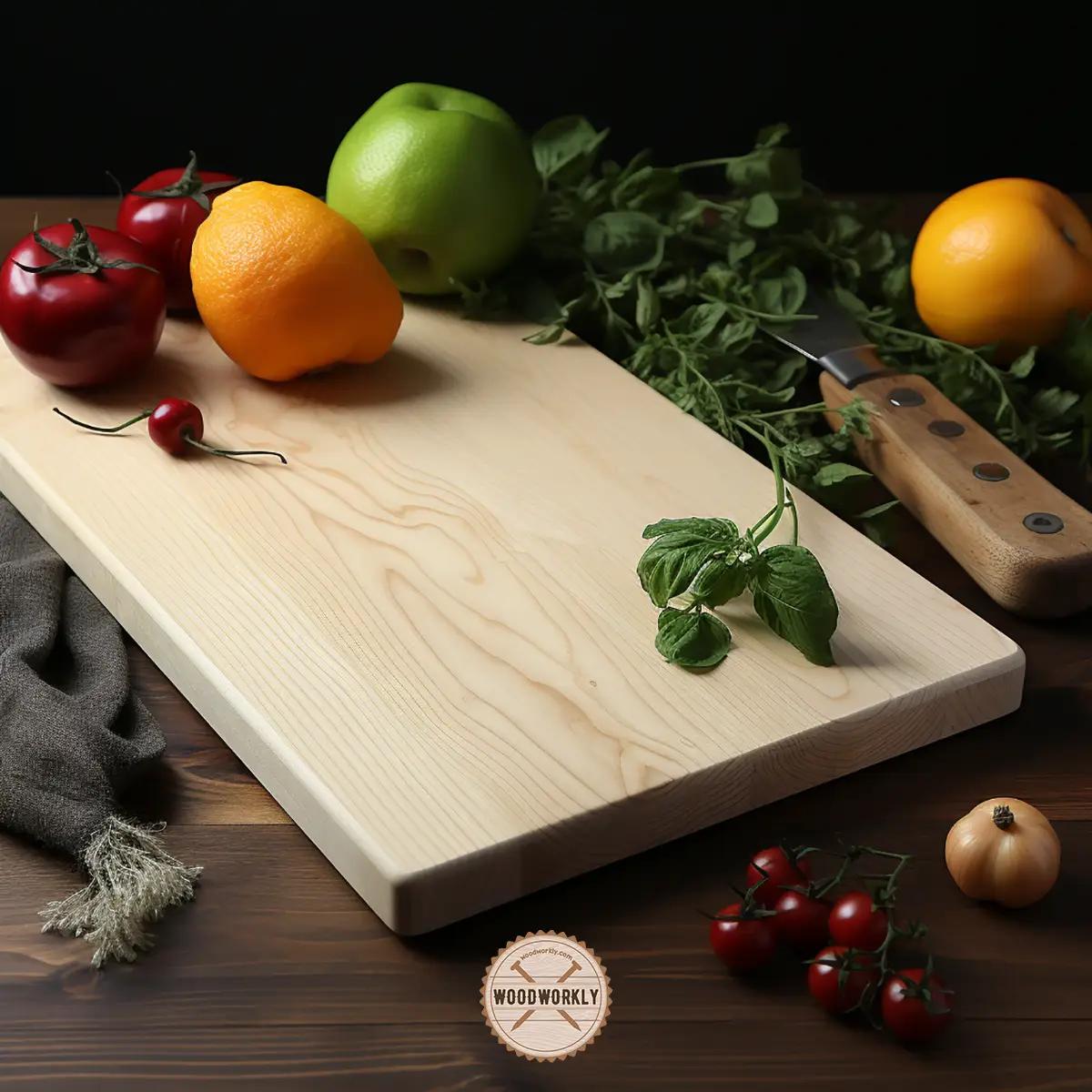
Even though poplar has several disadvantages than advantages, some people still go for poplar wood in making cutting boards because of its smooth and very clear surface.
Poplar wood is so easy to finish with great workability and an excellent choice for beginners as well. But it smells odd when cutting.
I have discussed why poplar wood is not good for cutting boards in terms of strength, but let’s talk about the food safety of poplar wood.

Is Poplar Wood Safe for Food?
Unfortunately, poplar wood doesn’t consider food safe unless it has proper finishing.
Poplar wood is too soft and has a highly porous structure. Therefore, poplar sucks up bacteria like a sponge.
If your cutting board is made of poplar wood, always apply food-safe mineral oil whole over the surface when finishing the cutting board.
Here are some food-safe finishes you can apply on your poplar cutting board to make it food-safe,
- Shellac
- Mineral oil
- Carnauba wax
- Pure tung oil
- Raw linseed oil
- Walnut oil
By applying a food-safe quality finisher, it will prevent bacteria and food particles to go inside of the poplar wood.
After a proper finishing, you’ll end up with a nice and beautiful poplar cutting board which is totally safe for food.
As you can see even though poplar wood isn’t considered food safe, you can easily solve that using a food-safe finisher.
But for being too soft and fuzzy and not suitable for heavy cutting, still poplar wood is not the best option we can go for making a cutting board.
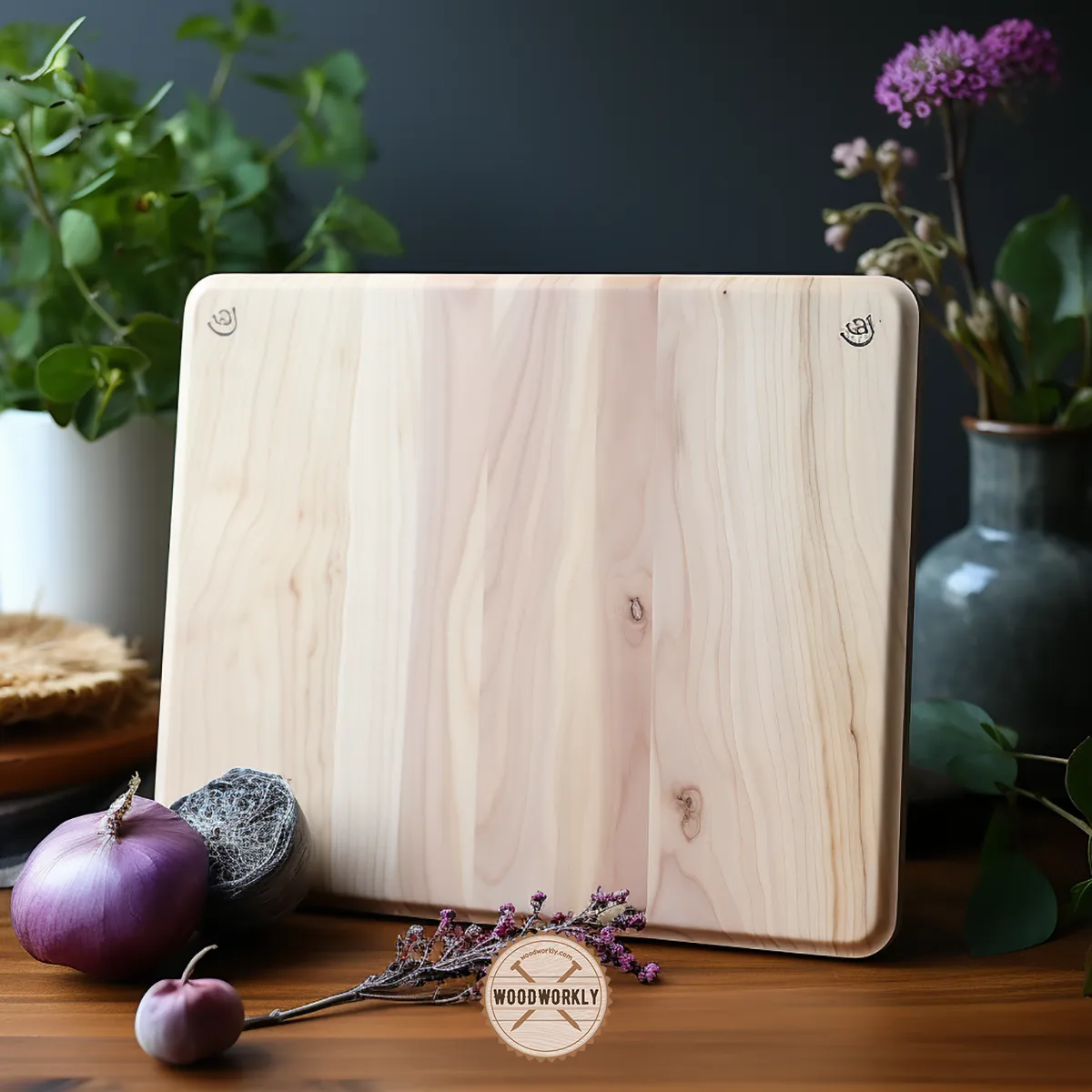
Why is Poplar Too Soft for Cutting Board?
Poplar is not stronger than most hardwoods. Because of being too soft poplar wood isn’t good for heavy cuttings.
So, let’s look deeper into why is considered too soft for cutting board in terms of the following factors.
- Density
- Bending strength
- Compressive strength
- Hardness
| Density | 0.42 |
| Bending strength | 10100psi |
| Compressive strength | 5540psi |
| Stiffness | 1.58Mpsi |
| Hardness | 540lb |
As you can see in terms of density poplar wood shows a 0.42 value and it is relatively higher than any softwood but lower than most hardwoods.
To make a cutting board, we should always go with hardwoods. But even though poplar wood is considered hardwood, it lacks strength due to low density.
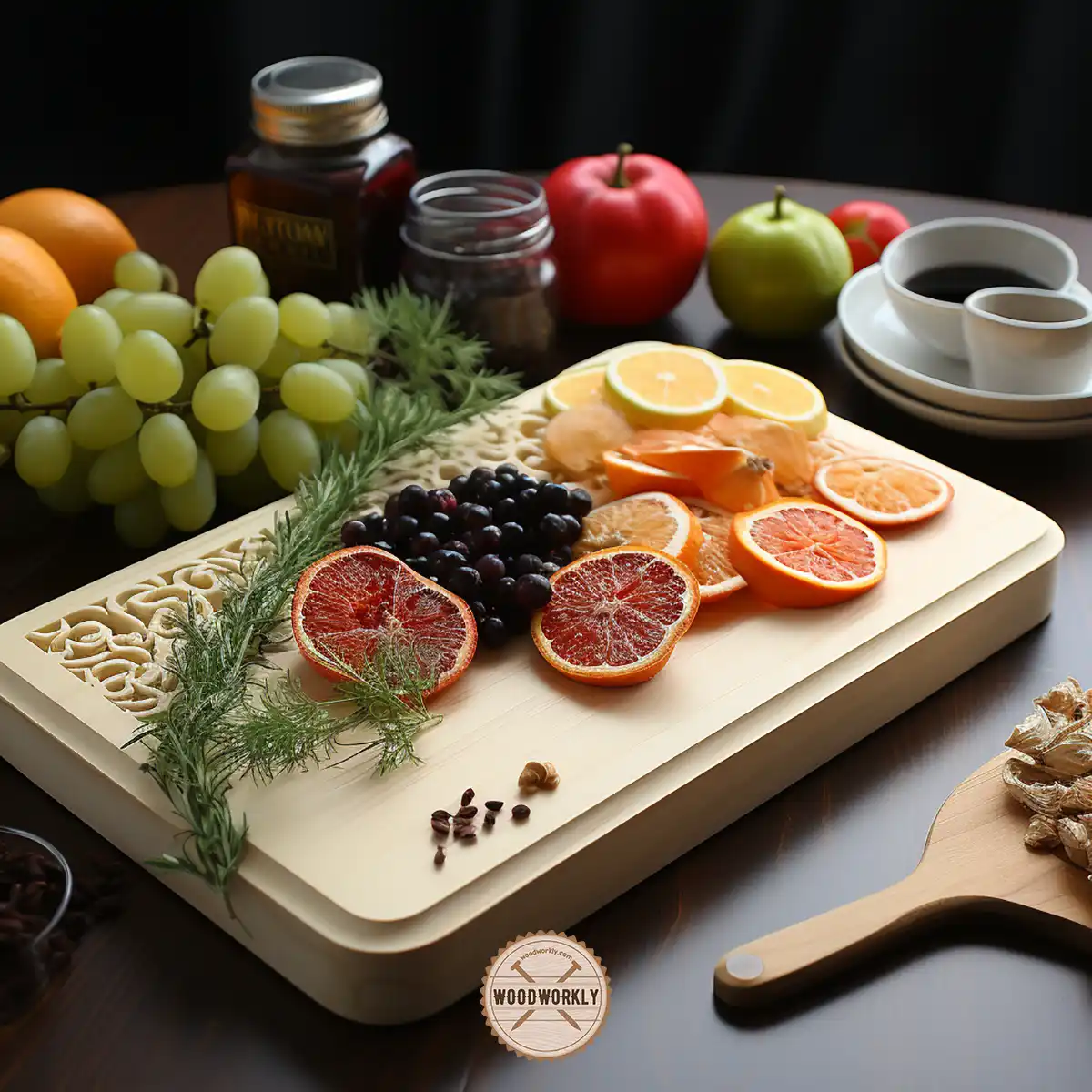
Hardness Of Poplar Compared to other Woods
Let’s see how much poplar wood is softer than most other popular wood types in terms of the Janka hardness scale.
| Wood Type | Janka Hardness Value (N) | Grades |
| Ebony (Brazilian) | 16420 | Exceedingly Hard |
| Cumaru | 15470 | Exceedingly Hard |
| Ebony | 14300 | Extremely Hard |
| Golden Teak | 10400 | Extremely Hard |
| Rosewood | 7900 | Hard |
| White Oak | 6000 | Hard |
| Ash | 5900 | Somewhat Hard |
| Birch | 5600 | Somewhat Hard |
| Walnut | 4500 | Firm |
| Cherry | 4200 | Firm |
| Mahogany | 3600 | Firm |
| Douglas Fir | 2900 | Soft |
| Chestnut | 2400 | Soft |
| Poplar | 2400 N (540 lbf) | Soft |
| White Pine | 1900 | Very Soft |
| Balsa | 310 | Very Soft |
As you can see poplar wood is too soft with only a 540 rating for the Janka hardness test value.
Because of having porous structure and fiber vessels with large diameters, the density of poplar wood is less, and it is the main reason for poplar wood being too soft.
This is a huge thing when it comes to kitchen applications like cutting boards because the surfaces are regularly hit by knives and sharp tools.
This will cause dents and scratch easily and ruin the cutting board and waste to energy you put into that thing to make.
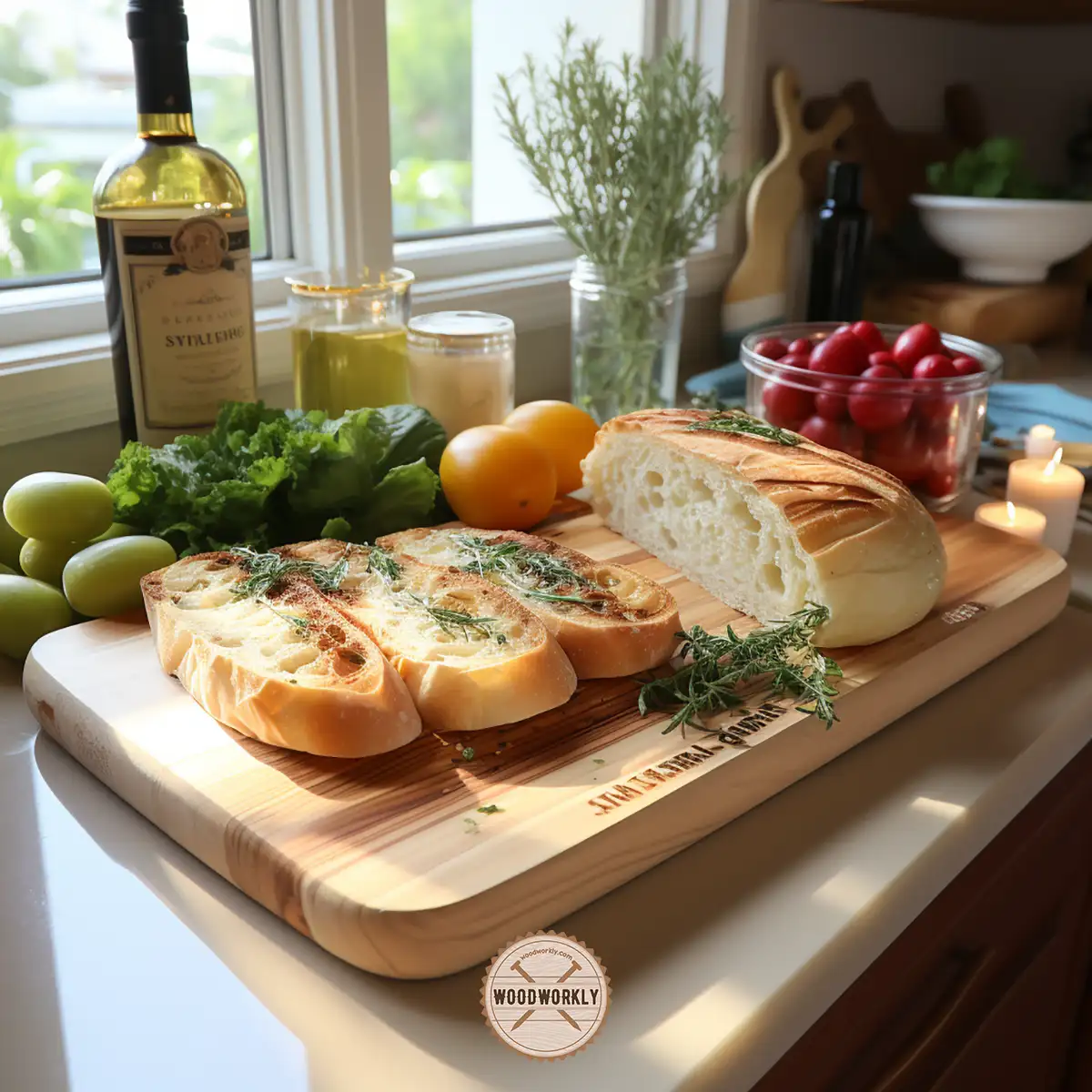
Is Poplar Good for Butcher Block?
Poplar wood is too soft and not a good choice for making a butcher block. Poplar will easily tear up when working with heavy cutting tools. It dents and scratches easily.
Eventually, you’ll regret using poplar wood to make a beautiful butcher block but very little in strength.
Here’s some of the best wood you can use to make butcher block rather than going with Poplar. They are,
- Maple (Hard or Soft)
- Oak
- Beech
- Teak
- Walnut

So, let’s talk about what alternatives you have to make the cutting board better than poplar wood.
Better Woods for Cutting Boards than Poplar
There are lots of wood perfectly suitable for making cutting boards than poplar.
Those woods have great strength and hardness which can bear heavy cuttings easily without making any scratches or dents.
They don’t tear up easily as poplar wood.
Most importantly, they are food-safe as well.
Here’re some of the better wood types than poplar for cutting boards,
- Maple
- Walnut
- Beech
So, let’s discuss each of the wood one by one and how important they are when making cutting boards.
Maple
Maple wood is considered the best wood for cutting boards. Maple wood is so much harder than poplar wood.
Therefore, it can easily bear against heavy cuttings. Light color wood grain gives a unique appearance to your cutting board.
Maple wood does not suck up bacteria like poplar wood does, because of has a very less amount of porous structure, and fiber vessels are also so small in diameter.
Therefore, food particles don’t go inside the wood. because of having great finishing properties, maple will stain easily.
At the end of the process, I can guarantee you’ll get a higher durable, higher-strength, cutting board than you get from a maple wood cutting board.
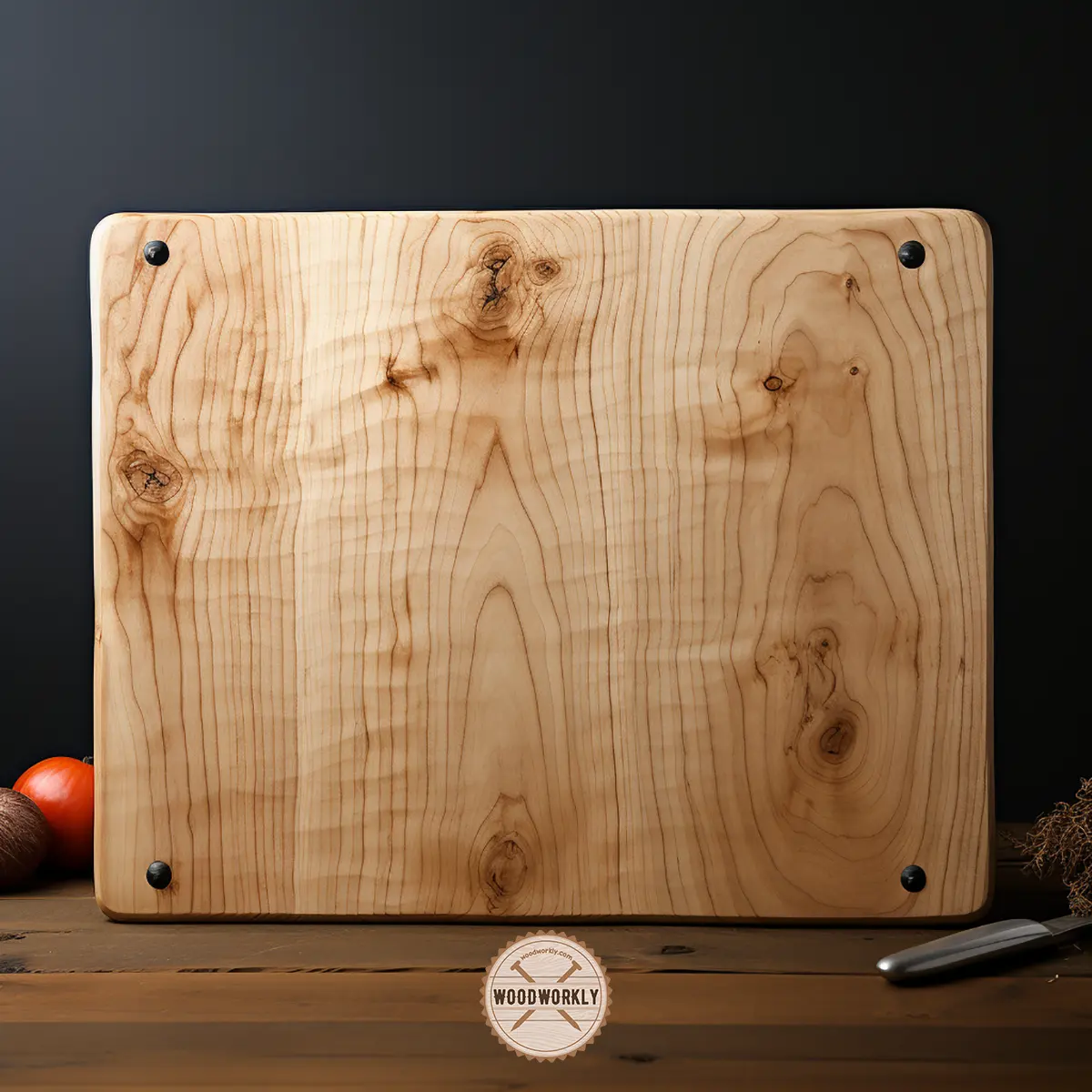
Beech
Beechwood has high hardness than poplar wood and is great for heavy cutting applications. It doesn’t suck up water, bacteria, or food particles easily because of has a tight grain structure.
Water absorbance of beech wood is very low and that is an added advantage of making cutting boards because they are regularly hit by water.
Therefore, beechwood is so much more food-safe than poplar wood and it’ll eventually get a beautiful reddish tint over time.
The main disadvantage of using beech wood for cutting boards than poplar is, beechwood tends to shrink over time because of environmental elements.
But we can easily prevent it with proper conditioning of the wood.

Walnut
Walnut wood doesn’t have any shrinking issues and has excellent qualities which makes it perfect for cutting boards.
Walnut wood is more durable and great in appearance than poplar wood.
But remember to give proper maintenance regularly to keep the walnut cutting board as fresh as new.
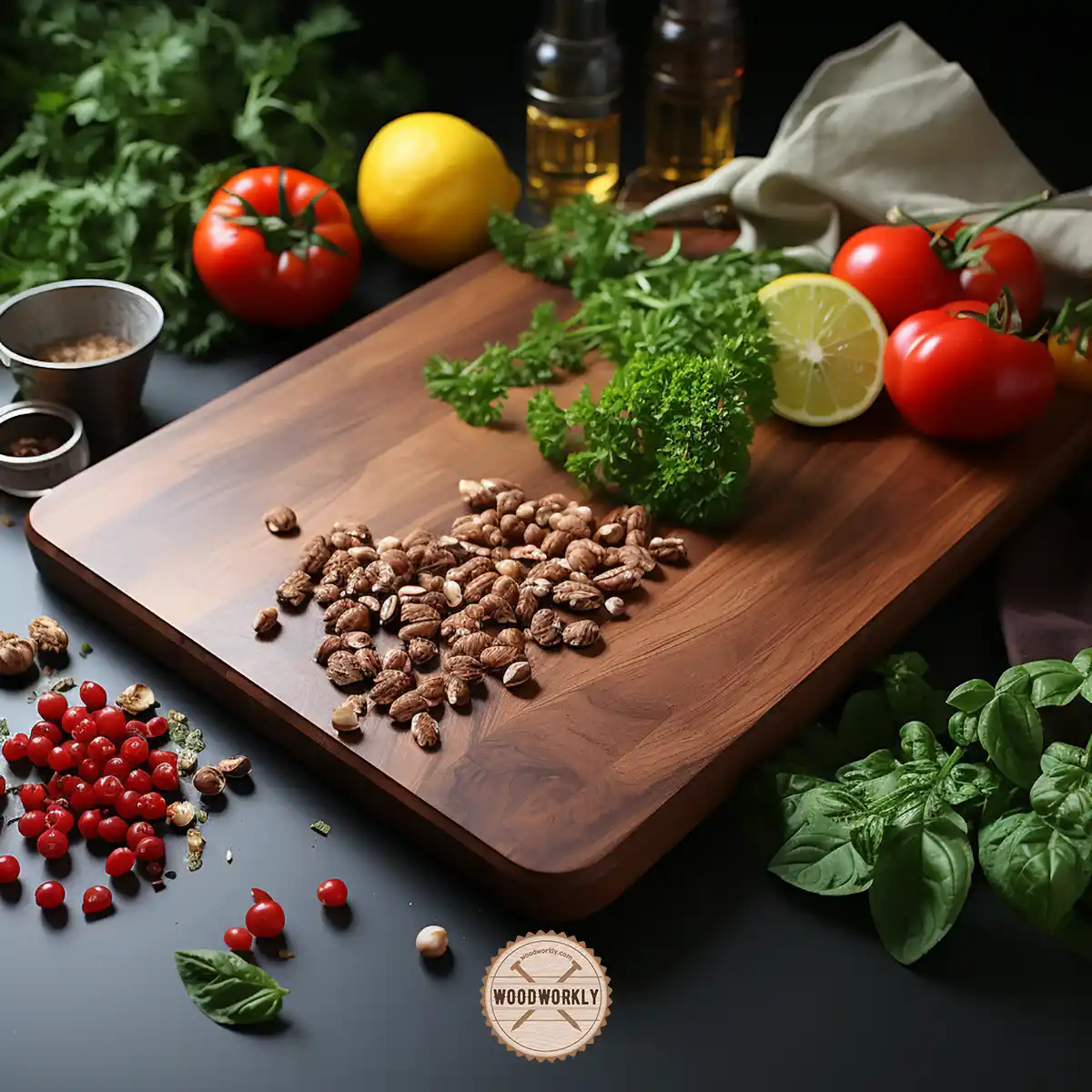
That’s it, folks! Now you know if Is poplar good for cutting boards and what are the pros and cons you might face by using it for the application.
So, let’s answer some frequently asked questions.
FAQs
Which types of wood are best for making cutting boards?
The top choices for cutting boards include maple, walnut, teak, and beech, as they balance hardness, porosity, cost, and non-toxicity.
Are there any specific considerations when choosing a poplar wood cutting board?
When choosing a poplar wood cutting board, consider its size, functionality, and quality of the wood grain, as well as its compatibility with your kitchen decor.
How do you maintain a poplar wood cutting board?
Poplar wood cutting boards should be cleaned by hand with a gentle soap and water mixture, and regularly oiled to prevent the surface from absorbing liquids.
Is Poplar wood cutting board dishwasher safe?
No, poplar wood cutting boards are not dishwasher safe and should be cleaned by hand to maintain their quality and longevity.
What are some of the best poplar wood cutting boards on the market?
Some top choices include the Established 98 Bailey Board, which is ideal for cutting soft foods and bread, and the Integrity Designs Yellow Poplar Board, known for its large size and beautiful multi-color wood grain.
Can poplar wood cutting boards be used for heavy-duty tasks like cutting meat?
While possible, poplar wood’s softer grain might not be ideal for heavy-duty tasks like cutting meat, as it may show marks and gouges more easily than harder woods.
Does a poplar wood cutting board dull knives?
While not as hard as some woods, poplar is still a hardwood and its softer nature could potentially be kinder to knife edges than some harder wood types.

Did I cover all you wanted to know about: Is Poplar Good for Cutting Boards?
In this article, I have mainly discussed is poplar good for cutting boards with its qualities.
By looking at discussed advantages and disadvantages of poplar cutting boards you can get a clear idea about whether poplar is a great choice or not to make cutting boards.
As an experienced woodworker, my opinion is poplar wood can be used for cutting boards, but it’s not the best choice due to its softer nature among hardwoods. It tends to show knife marks and gouges quickly. However, it can be suitable for certain tasks, such as cutting soft foods, and is appreciated for its aesthetic qualities.
In terms of food-safe, even though you apply a good finisher, the finishing coat can easily remove when hitting knives continuously.
So, better to go for other alternatives than sticking on poplar wood for cutting boards.
Furthermore, I have discussed is poplar good for butcher blocks and what is the best wood for cutting boards than poplar.
Hope you’ve learned a lot of things about poplar wood.
So, let’s give it a try and make beautiful strong cutting boards with your preferred wood type. Hope you’ll get the best outcome!